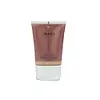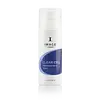What's inside
What's inside
 Key Ingredients
Key Ingredients

 Benefits
Benefits

 Concerns
Concerns

 Ingredients Side-by-side
Ingredients Side-by-side

Zinc Oxide 8.5%
Cosmetic ColorantTitanium Dioxide 11.5%
Cosmetic ColorantWater
Skin ConditioningCoconut Alkanes
EmollientDimethicone
EmollientSqualane
EmollientPolyglyceryl-4 Diisostearate/Polyhydroxystearate/Sebacate
EmulsifyingCI 77163
Cosmetic ColorantSilica
AbrasiveGlycerin
HumectantIsohexadecane
EmollientPolyglyceryl-4 Isostearate
EmulsifyingVinyl Dimethicone/Lauryl Dimethicone Crosspolymer
Methicone
EmollientCyclopentasiloxane
EmollientCetyl PEG/PPG-10/1 Dimethicone
EmulsifyingHexyl Laurate
EmollientHydroxypropylcocoate PEG-8 Dimethicone
EmollientDipotassium Glycyrrhizate
HumectantPerfluorodecalin
Skin ConditioningZinc PCA
HumectantSaccharomyces Lysate Extract
HumectantCentella Asiatica Extract
CleansingOlea Europaea Leaf Extract
PerfumingAlgae Extract
EmollientArtemisia Vulgaris Extract
Skin ConditioningSodium Hyaluronate
HumectantIsomalt
HumectantPhospholipids
Skin ConditioningCyperus Rotundus Root Extract
Skin ConditioningLonicera Japonica Flower Extract
Skin ConditioningXanthium Sibiricum Fruit Extract
Skin ConditioningRetinyl Palmitate
Skin ConditioningAscorbyl Palmitate
AntioxidantOpuntia Ficus-Indica Stem Extract
Skin ConditioningTocopherol
AntioxidantSodium Benzoate
MaskingBeta-Carotene
Skin ConditioningPotassium Sorbate
PreservativeSalicylic Acid
MaskingAcetyl Hexapeptide-8
HumectantSorbic Acid
PreservativeLecithin
EmollientVitis Vinifera Fruit Cell Extract
Skin ConditioningErgothioneine
AntioxidantCyclohexasiloxane
EmollientPolyglyceryl-3 Polydimethylsiloxyethyl Dimethicone
Skin ConditioningMica
Cosmetic ColorantAlumina
AbrasiveCoco-Caprylate/Caprate
EmollientPhenoxyethanol
PreservativePolyhydroxystearic Acid
EmulsifyingDimethicone/PEG-10/15 Crosspolymer
Magnesium Sulfate
Caprylyl Glycol
EmollientEthylhexylglycerin
Skin ConditioningIron Oxides
Zinc Oxide 8.5%, Titanium Dioxide 11.5%, Water, Coconut Alkanes, Dimethicone, Squalane, Polyglyceryl-4 Diisostearate/Polyhydroxystearate/Sebacate, CI 77163, Silica, Glycerin, Isohexadecane, Polyglyceryl-4 Isostearate, Vinyl Dimethicone/Lauryl Dimethicone Crosspolymer, Methicone, Cyclopentasiloxane, Cetyl PEG/PPG-10/1 Dimethicone, Hexyl Laurate, Hydroxypropylcocoate PEG-8 Dimethicone, Dipotassium Glycyrrhizate, Perfluorodecalin, Zinc PCA, Saccharomyces Lysate Extract, Centella Asiatica Extract, Olea Europaea Leaf Extract, Algae Extract, Artemisia Vulgaris Extract, Sodium Hyaluronate, Isomalt, Phospholipids, Cyperus Rotundus Root Extract, Lonicera Japonica Flower Extract, Xanthium Sibiricum Fruit Extract, Retinyl Palmitate, Ascorbyl Palmitate, Opuntia Ficus-Indica Stem Extract, Tocopherol, Sodium Benzoate, Beta-Carotene, Potassium Sorbate, Salicylic Acid, Acetyl Hexapeptide-8, Sorbic Acid, Lecithin, Vitis Vinifera Fruit Cell Extract, Ergothioneine, Cyclohexasiloxane, Polyglyceryl-3 Polydimethylsiloxyethyl Dimethicone, Mica, Alumina, Coco-Caprylate/Caprate, Phenoxyethanol, Polyhydroxystearic Acid, Dimethicone/PEG-10/15 Crosspolymer, Magnesium Sulfate, Caprylyl Glycol, Ethylhexylglycerin, Iron Oxides
Benzoyl Peroxide 5%
Water
Skin ConditioningCaprylic/Capric Triglyceride
MaskingOligopeptide-10
AntimicrobialCetearyl Olivate
Syringa Vulgaris Extract
Skin ConditioningChamomilla Recutita Flower Extract
MaskingOryza Sativa Bran Extract
Skin ConditioningSorbitan Olivate
EmulsifyingAloe Barbadensis Leaf Extract
EmollientStearic Acid
CleansingSucrose Cocoate
EmulsifyingTocopheryl Acetate
AntioxidantMaltodextrin
AbsorbentMelaleuca Alternifolia Leaf Oil
AntioxidantMentha Viridis Leaf Oil
AstringentDisodium EDTA
Eucalyptus Globulus Leaf Oil
PerfumingArnica Montana Flower Extract
MaskingAesculus Hippocastanum Extract
AntioxidantMelia Azadirachta Leaf Extract
Skin ConditioningBoswellia Serrata Extract
Skin ConditioningHoney Extract
HumectantCamellia Sinensis Leaf Extract
AntimicrobialPotassium Sorbate
PreservativeSodium Benzoate
MaskingButylene Glycol
HumectantPhenoxyethanol
PreservativeCaprylyl Glycol
EmollientHexylene Glycol
EmulsifyingBenzoyl Peroxide 5%, Water, Caprylic/Capric Triglyceride, Oligopeptide-10, Cetearyl Olivate, Syringa Vulgaris Extract, Chamomilla Recutita Flower Extract, Oryza Sativa Bran Extract, Sorbitan Olivate, Aloe Barbadensis Leaf Extract, Stearic Acid, Sucrose Cocoate, Tocopheryl Acetate, Maltodextrin, Melaleuca Alternifolia Leaf Oil, Mentha Viridis Leaf Oil, Disodium EDTA, Eucalyptus Globulus Leaf Oil, Arnica Montana Flower Extract, Aesculus Hippocastanum Extract, Melia Azadirachta Leaf Extract, Boswellia Serrata Extract, Honey Extract, Camellia Sinensis Leaf Extract, Potassium Sorbate, Sodium Benzoate, Butylene Glycol, Phenoxyethanol, Caprylyl Glycol, Hexylene Glycol
Alternatives
Ingredients Explained
These ingredients are found in both products.
Ingredients higher up in an ingredient list are typically present in a larger amount.
Caprylyl Glycol is a humectant and emollient, meaning it attracts and preserves moisture.
It is a common ingredient in many products, especially those designed to hydrate skin. The primary benefits are retaining moisture, skin softening, and promoting a healthy skin barrier.
Though Caprylyl Glycol is an alcohol derived from fatty acids, it is not the kind that can dry out skin.
This ingredient is also used as a preservative to extend the life of products. It has slight antimicrobial properties.
Learn more about Caprylyl GlycolPhenoxyethanol is a preservative that has germicide, antimicrobial, and aromatic properties. Studies show that phenoxyethanol can prevent microbial growth. By itself, it has a scent that is similar to that of a rose.
It's often used in formulations along with Caprylyl Glycol to preserve the shelf life of products.
Potassium Sorbate is a preservative used to prevent yeast and mold in products. It is commonly found in both cosmetic and food products.
This ingredient comes from potassium salt derived from sorbic acid. Sorbic acid is a natural antibiotic and effective against fungus.
Both potassium sorbate and sorbic acid can be found in baked goods, cheeses, dried meats, dried fruit, ice cream, pickles, wine, yogurt, and more.
You'll often find this ingredient used with other preservatives.
Learn more about Potassium SorbateSodium Benzoate is a preservative. It's used in both cosmetic and food products to inhibit the growth of mold and bacteria. It is typically produced synthetically.
Both the US FDA and EU Health Committee have approved the use of sodium benzoate. In the US, levels of 0.1% (of the total product) are allowed.
Sodium benzoate works as a preservative by inhibiting the growth of bacteria inside of cells. It prevents the cell from fermenting a type of sugar using an enzyme called phosphofructokinase.
It is the salt of benzoic acid. Foods containing sodium benzoate include soda, salad dressings, condiments, fruit juices, wines, and snack foods.
Studies for using ascorbic acid and sodium benzoate in cosmetics are lacking, especially in skincare routines with multiple steps.
We always recommend speaking with a professional, such as a dermatologist, if you have any concerns.
Learn more about Sodium BenzoateWater. It's the most common cosmetic ingredient of all. You'll usually see it at the top of ingredient lists, meaning that it makes up the largest part of the product.
So why is it so popular? Water most often acts as a solvent - this means that it helps dissolve other ingredients into the formulation.
You'll also recognize water as that liquid we all need to stay alive. If you see this, drink a glass of water. Stay hydrated!
Learn more about Water